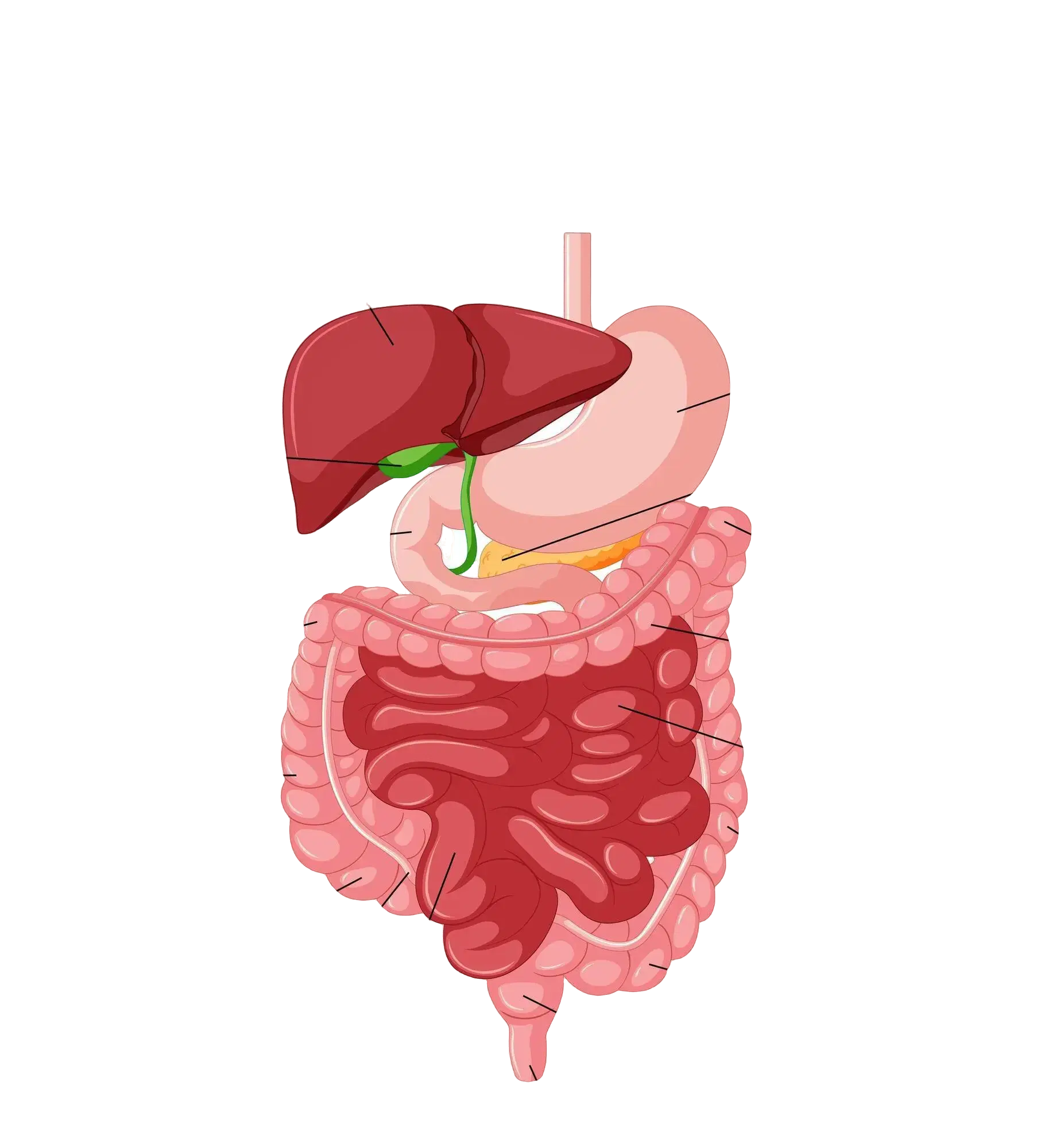
How does the digestive system work?
Have you ever wondered what happens to food and how the digestive system works? A human eats 1 to 2 kilograms of food daily, which equates to 365 to 700 kilograms per year and 25,000 to 30,000 kilograms in a lifetime. All this food goes through the digestive system to get processed. An expert explains the digestion process in simpler terms.
Parts of the digestive system
The digestive system is a complex and diversified organ system in the body due to the presence of trillions of bacteria. It is the second largest organ system in the body after the skin. It comprises multiple organs, starting with the mouth and ending with the anus. The gastrointestinal tract is a tubular structure which is around 9 meters long with the following parts:
- Mouth
- Oesophagus or Food pipe
- Stomach
- Small intestine - Duodenum, Jejenum, Ileum
- Large intestine - Cecum, Colon
Three other vital organs help these organs digest food by releasing various digestive juices. They are:
- Liver
- Gall bladder
- Pancreas
Mesenteric muscles in the abdomen help support and hold all these organs in place. In addition to these parts, various hormones, enzymes, nerves, and the blood helps facilitate digestion.
Process of digestion
- The process of digestion starts even before we eat food. Just a look at the food and its smell is enough to kick start the process, where our salivary glands produce salivary juices in anticipation of the food.
- Our saliva contains enzymes that can digest certain carbohydrates. Once we take a mouthful of food, it gets mixed with salivary juices due to chewing action to form a moist lump called a bolus.
- Once the bolus is swallowed, it enters the food pipe or oesophagus. The nerves and muscles in the food pipe sense the food and begin squeezing movements to push the food down to the stomach.
- A muscular valve at the end of the oesophagus opens to allow the food into the stomach. It closes back to avoid regurgitation of stomach contents into the oesophagus.
- As soon as the stomach gets filled with the food, the opening at the end of the stomach called the pylorus gets closed to keep the food in the stomach for the next 2 to 3 hours for further processing.
- The accumulation of food in the stomach triggers the secretion of hormones and stomach acids and prepares the liver, gall bladder and pancreas for the next stage of digestion.
- The liver produces yellowish-green bile juice, which helps digest fats in the food. It gets stored in the gall bladder. The pancreas also produces pancreatic juice. Meanwhile, the stomach's grinding movements make food into smaller pieces, forming a frothy liquid called chyme.
- The pylorus opens systematically to let the portions of chyme enter the first part of the small intestine called the duodenum. The breaking down of the food into nutrients begins here with the help of bile, pancreatic, and intestinal juices.
- Fats, proteins, and carbohydrates are broken down into fatty acids, amino acids, and glucose, respectively.
- Most of the absorption of these nutrients happens in the jejunum and ileum through small projections in their walls called villi. These villi have blood vessels which take up these nutrients and distribute them throughout the body.
- The sloughed-off intestinal cells, undigested materials like fibre, seeds, water, and plant materials enter the colon where the water is sucked off to make the undigested material into a solid or semisolid waste.
- The colon pushes this waste further down into the rectum to form stools. The nerves in the rectum sense the fullness and inform the brain that it is time to empty the bowels.
- The coordinated movements due to increased abdominal pressure, squeezing action of rectal muscles, and the relaxation of the anal sphincter lets the stools out
- The whole digestion process, from start to finish, can take up to 30 hours.
Takeaway points
Digestion is a complex process involving multiple organs and digestive juices containing hormones and enzymes. It starts even before we eat food and ends with the emptying of bowels. The food gets digested, processed, and distributed as nutrients throughout the body. The whole digestion process can take more than a day.
If you are experiencing digestive issues and looking for a digestive health specialist or the best gastro doctor in Bangalore, visit Bangalore Gastro Centre Hospitals at HSR Layout. It is a state-of-the-art facility that provides top-quality diagnostic services and gastro care for digestive conditions ranging from acidity to gastrointestinal cancers.
